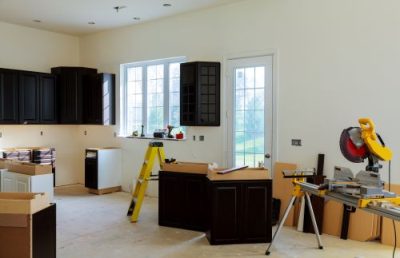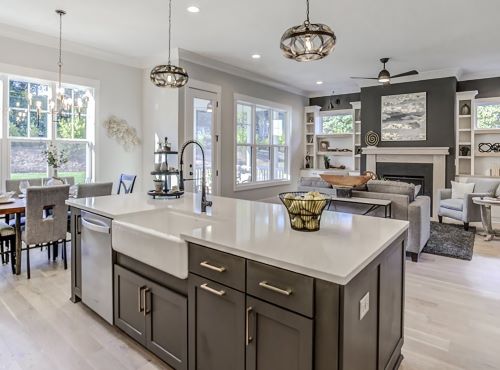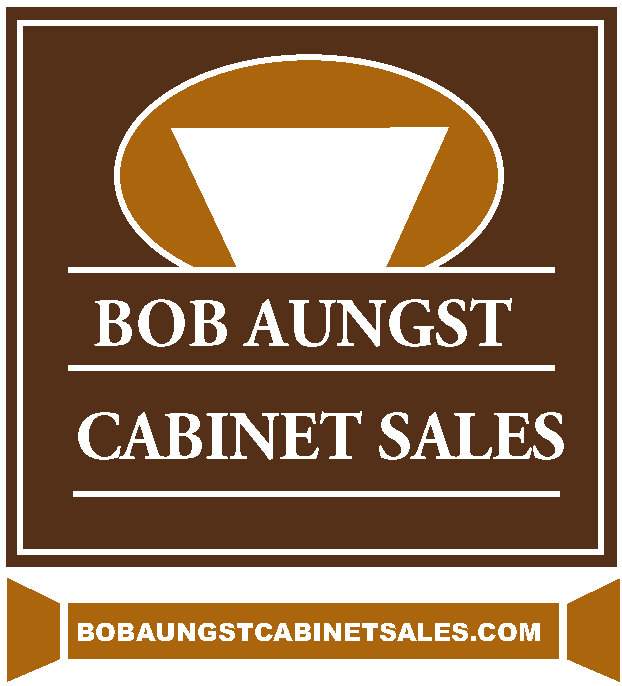Selling domestic semi-custom cabinets in today’s hyper-competitive market is hard work. To do it successfully is even more difficult. I’ve assembled some tactics for you to use to fortify yourself against the challenges you face when selling semi-custom cabinets.
Before We Get to It, a Bit of Background
In the 90’s I sold Homecrest as a builder sales rep for a large distributor. This was back when cycle ship programs were just emerging, and truckload-only stocking distributor sales were starting to go away. Many of the truckload-only stock manufacturers of yesterday slowly became the semi-custom manufacturers of today.
They achieved this conversion by adding wood species, finish colors, door styles and custom modifications. Homecrest, in particular, stopped being a price-point line sold to builders and became a designer line sold to the retail public. Without necessarily raising their quality.
And this conversion happened with essentially all larger mid-western and southern companies that started out as stock cabinet manufacturers. Virtually all of today’s semi-custom manufacturers were yesterday’s stock manufacturers. In other words, it is a price niche that evolved out of an efficient manufacturing environment vs. a let’s-make-something-better-than-stock environment.

Domestic Semi-Custom Cabinetry is Multi-Billion Dollar Business
Homecrest and the other national and large regional manufacturers helped make up the multi-billion dollar semi-custom price point. Semi-custom cabinetry is a huge, dominant niche that just about every dealer needs.
I’d say from the least expensive semi-custom cabinet line to the most expensive semi-custom cabinet line, there is a 20% price swing. (This is somewhat subjective as it is based on what manufacturers define themselves as vs. what dealers define them as.) Within that price range you’ll find the same problems.
Some of the perceived problems are just misplaced expectations for what the product is, but there is a healthy amount of the manufacturers thinking that it is “just the way it is” to meet customer demand at a price.
We may not like this, but this has been my experience, and it doesn’t get better with time.
Why or Why Not Sell Domestic Semi-Custom Cabinetry
There are a number of factors that drive dealers to semi-custom:
- competition from import focused dealers
- demographics of their selling area
- other semi-custom dealers they compete against
But in spite of the market size and prevalence of semi-custom, I find too many dealers are not willing to accept the reality of its shortcomings or prepare themselves to excel at selling it. They grow frustrated and ping pong around to manufacturers. Or they simply refuse to sell it, having never really figured it out.
Which is fine. If you don’t want the headaches — and many don’t — don’t sell it. But if you are going to sell it, here is my belief on the best approach.
Look at it this way: if you think what I’m saying is ridiculous and you can afford not to sell semi-custom, then don’t. I have many customers that sell imports and then jump the whole way to entry-level custom and leave the semi-custom to someone else to sell.
Why Can’t Manufacturers Improve Their Quality, Procedures, Personnel, Etc.?
There is a labor shortage that impacts every level of cabinet manufacturing, but it seems to be more acutely felt at the semi-custom level.
Why?
Because semi-custom manufacturers need to produce a high volume of cabinets very rapidly and efficiently. Plus include many options. Without the volume, the production model simply doesn’t work.
What About Cheaper Imports? Are They Better Quality than Domestic Semi-Custom?
A short aside.
Saying you don’t understand why cheaper imports are better quality than more expensive domestic semi-custom cabinets isn’t a valid way of looking at it. I hear this statement asked constantly by kitchen designers. While it vexes me also, it really doesn’t matter. And even if there was a satisfactory answer, it wouldn’t resolve the challenge of selling domestic semi-custom cabinets.
At the core, imports offer fewer colors on fewer wood species on a very narrow door offering in more limited cabinet sizes and with fewer or no custom options. It is a far less complex operation and far easier to staff. That aside, there is more to it than that. But instead of getting hung up on that, figure out what you can do.

Your Team
Now that we have covered your mind set, we need to talk about the other people involved in successfully designing, selling and managing kitchen projects through to completion.

1. Designers
Your designers need to know how to sell semi-custom. Your contract language and your language in the sales cycle must include your ability to fix, replace and make minor adjustments without your customers losing their minds. Or demanding factory replacements. And they will demand replacements every time that they aren’t educated on your process.
You have lost once a customer says they aren’t going to accept the cabinets at delivery. Don’t let this threat gain any momentum.

2. Installers
In an ideal world of semi-custom, your installers represent the final quality check that makes the cabinetry presentable to the homeowner. They install, they make adjustments, they level, they square and they touch up so the cabinets look more expensive than they are.
Unrealistic?
Get rid of the bellyachers. They are not helping your business.
Your Customers
Your customers need to understand what semi-custom cabinetry is and what it is not.
This, to a certain degree, goes with all cabinet selling, but setting expectations applies whether they are buying custom cabinets in natural walnut or semi-custom painted cabinets. Explain the market to them, what they are buying and what your process is and how it doesn’t void the warranty.
I have dealers that always quote with 3 options. Yes, that is more work. But it also tangibly opens the door for you to explain the market to your customer. And will likely save you time and headaches more often than it does not.
Err on the side of education, because maybe once they understand and see numbers side-by-side, they’d be willing to pay more to get something better.

Fortify Yourself when Selling Domestic Semi-Custom Cabinets
Create a “repair fund” for each project above and beyond your profit objectives or standard mark-up. This way you don’t feel like you are “losing money”.
I highly recommend starting your fund with your site finisher/touch-up person – possibly even your installer.
These trade professionals are very difficult to find. And they are worth their weight in gold for your business. The way I found most site finishers/touch up specialists is by word of mouth. They tend not to advertise and are only occasionally easy to find online.
Also, and this is specific to the business, Furniture Medic franchisees have done an excellent job.
Guardian also does excellent work.
Make it a priority to find one in your area and learn their process and what they want as far as finishing materials. Some want manufacturer supplied materials, while others don’t.
Question other trade professionals, furniture makers, furniture retailers, 2020 user groups, local NKBA chapter members, or even your manufacturers may be able to refer someone.
Other Ideas to Fortify Yourself for Successfully Selling Semi-custom
A customer of mine, that used their local Furniture Medic franchisee for 20 years, came up with a great idea when they heard the franchisee was retiring and closing their business. He paid for a multi-day touch up clinic for 3 of his carpenters/installers. Now they “clean up” the cabinets before they get to the home.
- Does he like it? no!
- Does he think that he should have to do it? Again, no!
- Does he sell more kitchens and have a better customer experience by building this cost into every job, whether he needs it or not? yes!
- Are some installers better than others? yes!
- Do some installers have the patience that renders better results, while others don’t? yes!
Figure it out. It will make your business better.
Invest in your installer. Mohawk offers wood touch up and repair workshops.
Your Semi-custom Manufacturer
By all means, go ahead and order replacement parts for easy items like doors, drawer fronts, moldings, panels, etc. This is maybe the best solution. There won’t be any issues if the replacement parts you’re ordering are covered under warranty,
However, depending on deadlines, it may be easier to repair than wait for items to be shipped from the manufacturer.
Caveat!
Don’t ever pay your invoice short for labor or inconvenience. Or at least don’t do that without getting prior approval. Manufacturers hate this, and in some cases, this will permanently damage the relationship. What have you accomplished? You now maybe need to find a new supplier and your investment in samples and displays is wasted. All the while you’ll be doing it all over again with someone new.
There is almost always a better solution that costs less in the long run.

A Productive Way to Approach Selling Semi-Custom
I found the following statement on the website of a dealer that sells semi-custom to the trade. It expresses a way of thinking that I think is a productive mindset for addressing the world of semi-custom. And give you some ideas for your own contract language.
“You certify that you are a Trade Professional familiar with and accustomed to the standard trade practices, terminology, definitions, and customs of the Kitchen and Bath Industry and accept all responsibility to educate and inform your customers of such; specifically but not limited to wood species expectations, specialty finish, paints and glaze application expectations, door and drawer adjustments, wood expansion and contraction and moisture content. You accept the responsibility and obligation of correcting minor issues; fixing and repairing minor defects or damage. We reserve the right to determine what is considered minor. In no circumstances do we cover labor charges. In any event, where new or replacement materials are supplied, the cost and burden of labor to install or repair materials will solely be yours.”
“Finally, as to the ‘There are other construction issues too, such as drawer dovetails that aren’t put together well. Cabinet sides that are out of square, etc.’ As you well know, if there are issues like this that are unacceptable, they can absolutely be replaced. Not a problem.”
“However, if the issues are minor and within factory tolerances, then the proper expectations should be reinforced with the homeowner. If you have a few of these, and pictures of them, please forward them to me and I’ll see about getting them replaced.”
Concluding Thoughts
Hopefully this has been helpful in giving you some tools for selling semi-custom cabinets. Or maybe you just aren’t suited to selling semi-custom. Which, as I mentioned earlier, leaves you in good company, as many dealers don’t sell semi-custom.
I, for many years, didn’t rep a semi-custom line because I didn’t want the adversarial relationship with my dealer/designer customers.
After some years I decided that I didn’t want to say no to semi-custom as a business opportunity. However, I also approach selling it differently than I did before. I’m very clear about how success and peace of mind is achieved.
Different company this time around that I know has more concern for their dealers, but yes some of the same issues persist.
